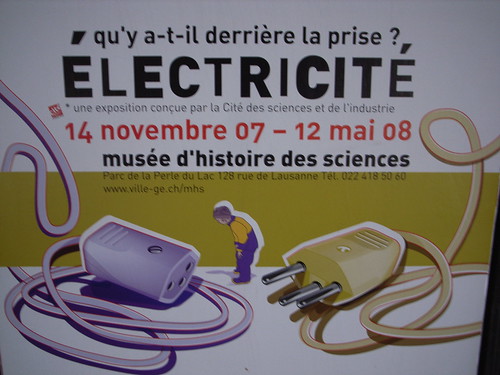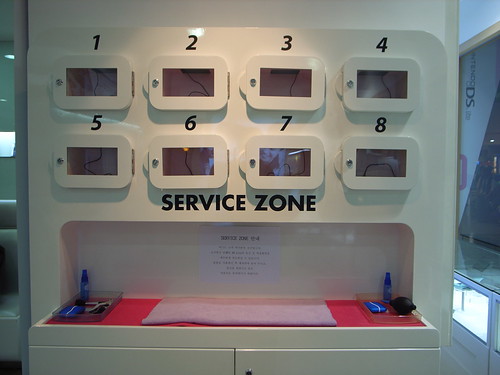To complete my notes on the LIFT07 workshop about foresight, there is a very dense and insightful podcast of Bill Cockayne's talk at Design2.0 (mp3, 15.41 Mb).
In this talk, Bill explains that one of the challenge for take companies/student in engineering schools is to get people understand the bigger context, complexity and big systems. Bill started as a technologist and migrate as a technology-foresisght/strategy person. His point is to ask questions such as "where is it going?", "why is it going there?". This is not a matter of being a futurist, not about predicting anything but rather to work on "how do you think about this coming technology?" "how do you think about this coming social change?". Technology sometimes drive social change, does not, sometimes, maybe but the question is how do you know when?. It's not predictions, it's something that comes out of knowing where information comes from.
Beyond tools to design for today's future (ethnography, brainstorming prototypes) and those for going a little further (scenario planning), the point is to go much further: how do you critically assumptions and build models. Oddly enough this stuff is simple, using 3 tools he describes. My raw notes below:
3 tools: point of view questions, X-Y graphs (out to get there by telling stories, looking for triggers of change, think about to get there when we think about what want to be, being normative (design a better future), defensive (design for a future that is coming but we don't like it), how to prepare for that kind of things),
1) Simple rule: You won't get there from here
let's say you design a toothbrush, you observe current users so you're going design today for a year from now
as you get out past 7 years that does not work, who are you going to observe?
this is all a POV: get out there with
2) X-Y graph: a structured brainstorming tool
Issues: A versus B. So discuss with your team: What would be the 2 most salient issue? issues being one on X and one on Y. So you have 4 endpoints. What would the salient issues that affect the questions we're asking in 20 years? It is going to be perception? a social issue? no tech change? Older people (with experience) are better doing this because they've seen change (they felt what is 5 years).
After a whole day, you may have 10 good X/Ys. Good = something you learn over time and sth you feel intuitively.
Tell stories when you're doing it, catchphrases, funny stories...
What you want to look for is whitespots = possibilities, you can make a difference here
either no one is going there because is difficult or it is an opportunity
how might we put something there? a toy, a computer, a social change
3) Then you start building scenarios, like design but way far out, 20 years ahead
what if have 3-5 stories? what would the world be out there?
the most important things about these lines: no changes, lots of changes, one big sweeping change...
tell a story in 5' and then spend the rest of the afternoon going backwards,
tell me what had to happen all along the way, tell me when it had to happen, give me a timeframe, the trigger, the driver, when does something has to happen is very critical
as you being to go backward, you realize what has to happen (before a product occur, need of having another tech, so another guy has to invent this tech)
As you begin to go further out in time, you have a much harder time to say how close your change drivers are going to be. Then assume that all the decisions you make are too pessimistic and far out. In near term, assume that everything you say is too slow
Long term changes tend to have trigger than is not necessarily in the center of where the change is occurring
when economics are changing is not that because a person stood up and said "Wall Street is going into that directions" it's more that you watch the housing data, you watch the number of kids that are how many kids are being born, breastfed,... and then you ask where is another change coming further off and how is it going to be its impacts?
The questions were quite interesting. One of the person asked what is the biggest mistake made by companies. Bill argues that most big companies forgot that research existed for two reasons: invent new things and spend a lot of money obtaining patents, the other is to have a bunch of guy who sit around, doing this kind of things he presented in the afternoon, drinking their coffee. Another issue is the fact that None of us read enough, none of us talk to smart people enough.
"Read methodologies and then read WSJ, E, NYT, CSM... daily because you needs to start getting a feel of where data comes from. You may be watching very closely where your products are going to be but something is changing in an area you never even thought but that could infect it, that could be an opportunity. READ MORE
These publications have the broadest range of readers they have op-eds. Get a broad view of business, social, economics, random technology stuff. Take the biggest daily newspaper that don't focus on news, more like the economist, that look for the analysis, context, why this happened, why A did X... Over time you build up and ability, look for different views, it's not a bias you're looking for, but a a different viewpoint"
Why do I blog this? great food for thoughts, methods and ideas about how to structure what I am doing in something more formalized. Besides, the question of "data" in foresight, addressed in the talk, is of great interest to me.




 A definition of technology s-curves drawn from Clayton Christensen (in
A definition of technology s-curves drawn from Clayton Christensen (in 


